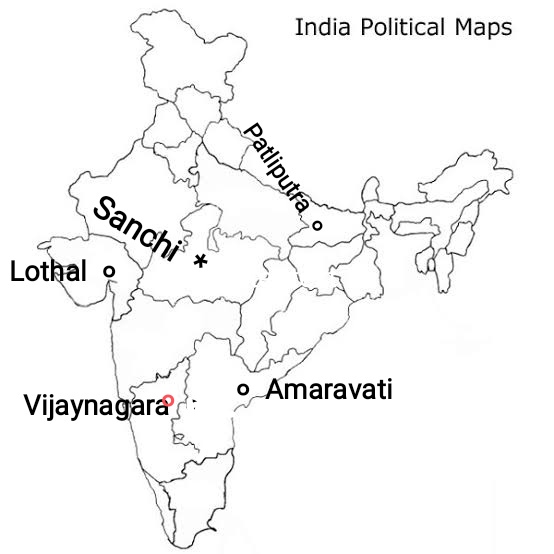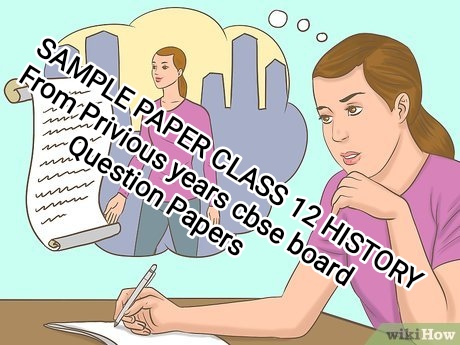Sample paper from cbse board privious years questions
Section A – MCQs (1 × 21 = 21 marks)
Q1. Which of the following was an important feature of Harappan cities?
(A) Use of bricks of different sizes
(B) Grid system of streets
(C) Absence of drainage
(D) Lack of fortifications
(CBSE 2014)
Ans: (B) Grid system of streets
Explanation: Harappan cities like Mohenjodaro and Harappa had streets laid out at right angles, showing urban planning. Houses had bathrooms connected to drains, indicating emphasis on hygiene. Use of standardized bricks indicates centralized control over city construction.
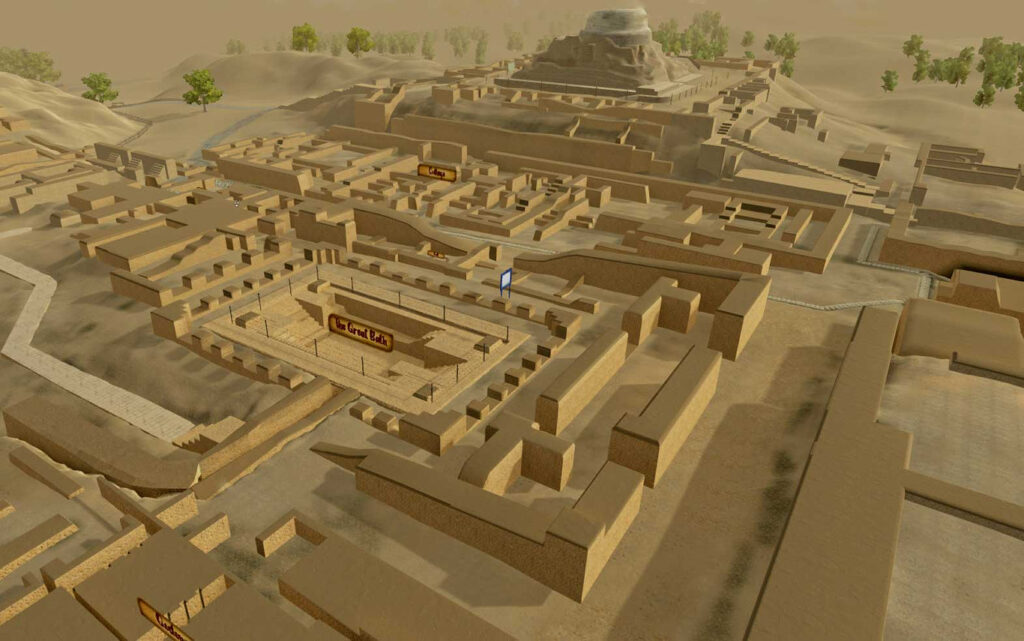
Q2. Assertion (A): Megasthenes’ Indica is an important source for Mauryan history.
Reason (R): It was written by a Greek ambassador at the court of Chandragupta Maurya.
Choose the correct option:
(A) Both A and R are true, R is the correct explanation.
(B) Both A and R are true, but R is not explanation.
(C) A is true, R is false.
(D) A is false, R is true.
(CBSE 2020)
Ans: (A) Both A and R true, R correct explanation
Explanation: Megasthenes was Greek ambassador to Chandragupta Maurya. His book Indica describes Mauryan administration, society, economy, and trade, making it an important historical source.
Q3. Which Veda is considered the earliest?
(A) Yajurveda
(B) Samaveda
(C) Rigveda
(D) Atharvaveda
(CBSE 2012)
Ans: (C) Rigveda
Explanation: Rigveda is oldest Veda (~1500 BCE), consisting of hymns to nature gods. Other Vedas (Yajur, Sama, Atharva) came later.
Q4. The Tripitaka is related to:
(A) Buddhism
(B) Jainism
(C) Hinduism
(D) Islam
(CBSE 2016)
Ans: (A) Buddhism
Explanation: Tripitaka (Three Baskets) consists of Buddha’s teachings, monastic rules (Vinaya), and philosophical texts (Abhidhamma).
Q5.
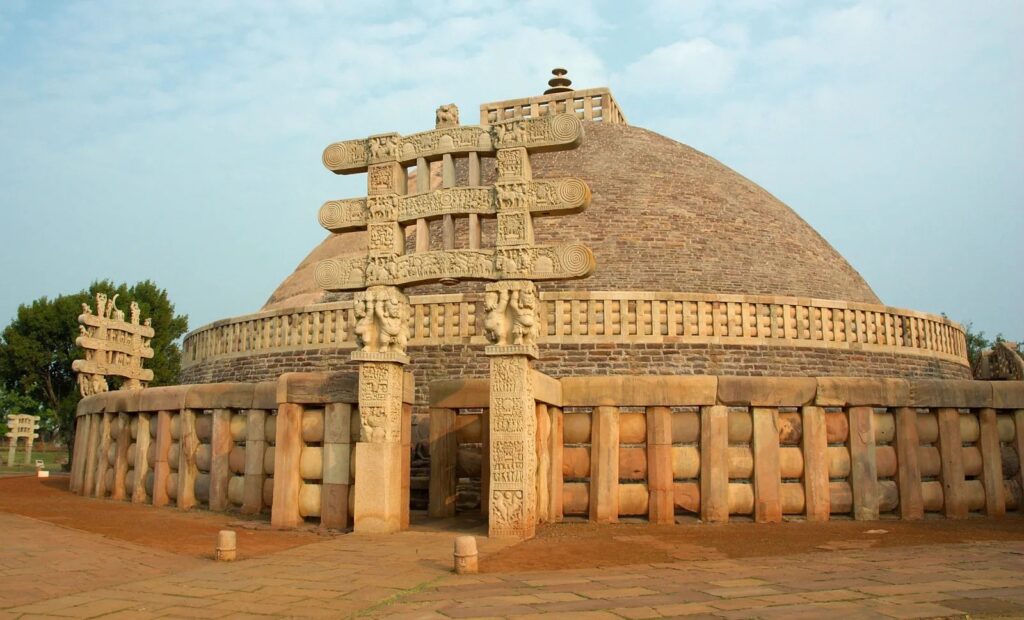
Identify the monument shown above:
(A) Amaravati Stupa
(B) Bharhut Stupa
(C) Sanchi Stupa
(D) Ajanta Caves
(CBSE 2018)
Ans: (C) Sanchi Stupa
Explanation: Located in Madhya Pradesh, Sanchi Stupa is a domed Buddhist monument with carved gateways depicting Jataka tales. Originally built during Mauryan period, later expanded by Sunga rulers.
Q6. The Prayaga Prashasti was composed by:
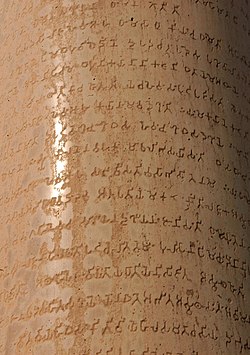
(A) Banabhatta
(B) Harisena
(C) Kalidasa
(D) Megasthenes
(CBSE 2013)
Ans: (B) Harisena
Explanation: Harisena, court poet of Samudragupta, praised king’s military conquests, diplomacy, and administrative skills in this inscription.
Q7. Who among the following built the city of Vijayanagara?
(A) Harihara and Bukka
(B) Krishna Deva Raya
(C) Narasimha Saluva
(D) Deva Raya II
(CBSE 2011)
Ans: (A) Harihara and Bukka
Explanation: Established in 1336 CE to resist northern Muslim invasions; became center of South Indian culture, administration, and trade.
Q8. Assertion (A): The Bhakti movement gave importance to personal devotion to God.
Reason (R): The movement encouraged rituals and priestly dominance.
(A) Both A and R are true.
(B) Both A and R are false.
(C) A true, R false.
(D) A false, R true.
(CBSE 2019)
Ans: (C) A true, R false
Explanation: Bhakti movement emphasized personal devotion to God (Nirguna or Saguna), rejecting ritualistic priestly control. Reason about promoting rituals is false.
Q9. The term Shreni means:
(a) Guild of merchants/craftsmen
(b) Village assembly
(c) Royal order
(d) Buddhist Sangha
Ans: (A) Guilds of traders or craftsmen
Explanation: Shrenis organized trade, standardized weights/measures, trained apprentices, and regulated quality. Important in Mauryan economy.
Q10. Al-Biruni wrote:
(a) Ain-i-Akbari (b) Tarikh-i-Hind
(c) Kitab-ul-Hind (d) Shahnama
Ans: (A) Kitab-al-Hind
Explanation: Al-Biruni’s Kitab-al-Hind gives detailed account of India’s religion, society, science, and literature. Provides non-Indian perspective on culture.
Q11. Ibn Battuta came to India during the reign of:
(a) Iltutmish (b) Alauddin Khalji (c) Muhammad-bin-Tughlaq (d) Shahjahan
Ans: (C) Muhammad-bin-Tughlaq
Explanation: Ibn Battuta (14th c.) recorded observations of Delhi Sultanate, society, trade, and administration in Rihla.
Q12. Who was John Marshall?
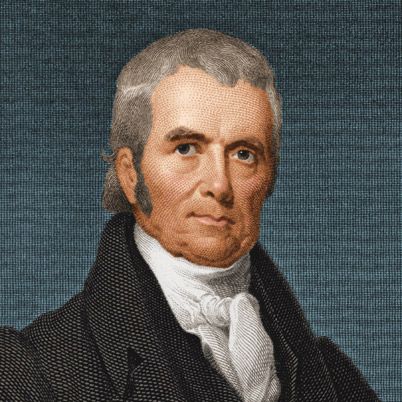
(a) Archaeologist of Harappa (b) Author of Arthashastra (c) Founder of Maurya dynasty (d) Historian of Vijayanagara
Ans: (A) Excavation of Harappa and Mohenjodaro
Explanation: Led major Indus Valley excavations (1920s–30s); discovered urban planning, drainage, seals, and artifacts.
Q13. Amaravati stupa is located in present-day:
(a) Tamil Nadu (b) Andhra Pradesh (c) Odisha (d) Karnataka
Ans: (A) Andhra Pradesh
Explanation: Satavahana-era Buddhist stupa; famous for intricate sculptures and reliefs depicting Jataka tales.
Q14. The Mahanavami Dibba in Vijayanagara was used for:
(a) Royal audiences and ceremonial purposes
(b) Storage of arms
(c) Residential quarters
(d) Library
Ans: (A) Royal audience and ceremonial purposes
Explanation: Elevated platform in Vijayanagara for Dasara festival and royal display of power.
Q15. Ashoka’s Dhamma inscriptions were mainly written on —
(A) Palm leaves and copper plates
(B) Stone tablets and manuscripts
(C) Rock and pillar edicts
(D) Clay tablets
Answer: (C) Rock and pillar edicts
Explanation: Ashoka’s Dhamma messages were inscribed on rocks and pillars across his empire to promote moral conduct, tolerance, and welfare among people.
Q16. The Alvars and Nayanars were associated with —
(A) Jainism and Buddhism
(B) Bhakti movement in South India
(C) Sufi movement
(D) Mauryan administration
Answer: (B) Bhakti movement in South India
Explanation: The Alvars (Vaishnavite) and Nayanars (Shaivite) saints of Tamil Nadu spread Bhakti ideas through devotional hymns, rejecting caste distinctions and promoting equality.
Q17. Harappan seals were mainly used for —
(A) Entertainment and games
(B) Decoration and fashion
(C) Trade and religious purposes
(D) Warfare and communication
Answer: (C) Trade and religious purposes
Explanation: Made of steatite, Harappan seals carried animal motifs and short inscriptions, used for trade authentication and possibly for religious or administrative identity.
Q18. Kabir emphasized —
(A) Idol worship and rituals
(B) Nirguna Bhakti
(C) Temple worship
(D) Recitation of Vedas
Answer: (B) Nirguna Bhakti
Explanation: Kabir rejected rituals and caste distinctions, teaching devotion to a formless (Nirguna) God, unity of all religions, and equality.
Q19. Samudragupta was called the ‘Exterminator of kings’ in —
(A) Prayaga Prashasti
(B) Harshacharita
(C) Arthashastra
(D) Indica
Answer: (A) Prayaga Prashasti
Explanation: Composed by court poet Harisena, this inscription praises Samudragupta’s conquests, diplomacy, and political achievements during the Gupta Empire.
Q20. Lothal was an important site for —
(A) Stone tool making
(B) Agriculture and pottery
(C) Dockyard and trade
(D) Buddhist monasteries
Answer: (C) Dockyard and trade
Explanation: Located in Gujarat, Lothal had a dockyard indicating maritime trade links with Mesopotamia — a major evidence of Harappan trade and craftsmanship.
Q21. The Vijayanagara king who patronized Telugu literature was —
(A) Harihara I
(B) Bukka Raya I
(C) Deva Raya II
(D) Krishnadeva Raya
Answer: (D) Krishnadeva Raya
Explanation: Krishnadeva Raya (1509–1529 CE) was a great patron of art and literature; he authored Amuktamalyada in Telugu and promoted Sanskrit and Kannada literature as well.
Section B – 3 Marks (Q22–27)
Q22. Explain the importance of Janapadas and Mahajanapadas in early India.
(CBSE 2012)
Answer:
- Janapadas → small territorial states; ruled by chieftains.
- Mahajanapadas → large states like Magadha, Kosala; developed administration, armies.
- Basis for political unification → Mauryan Empire.
Q23. “Ashoka’s Dhamma was aimed at maintaining social harmony.” Explain.
(CBSE 2014)
- Promoted non-violence, respect for elders, compassion.
- Encouraged tolerance for all religions; reduced social conflict.
- Welfare: medical facilities, roads, planting trees; moral loyalty among citizens.
Q24. Describe the main features of Mughal chronicles.
(CBSE 2018)
- Chronicles (Akbarnama, Shah Jahan Nama) record genealogy, administration, culture.
- Court historians legitimize ruler authority; evidence for historians.
- Al-Biruni → detailed observation of Indian religion, science, and society.
OR
Discuss the role of Al-Biruni in reconstructing Indian history.
(CBSE 2016)
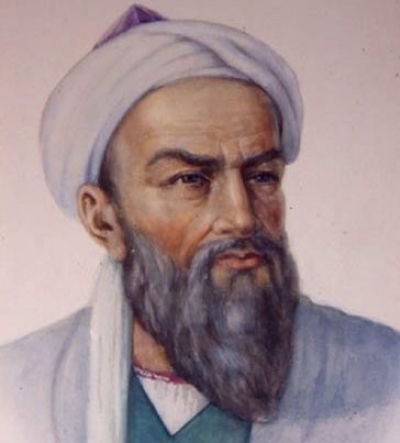
Answer: Role of Al-Biruni in Reconstructing Indian History:
His work Tahqiq ma li-l-Hind provides objective and reliable information on medieval India.
Visited India in 11th century and studied its society, culture, and religion.
Recorded customs, caste system, festivals, and philosophical schools.
Learned Sanskrit and analyzed texts like Vedas and Puranas.
Documented political systems, economy, and science (astronomy, mathematics, medicine).
Q25. Why was the battle of Talikota (1565 CE) important?
(CBSE 2013)
- Vijayanagara defeated by Deccan Sultanates (1565 CE).
- Capital Hampi destroyed; empire weakened politically.
- Shift of power to regional kingdoms.
Q26. Discuss the contribution of the Bhakti–Sufi saints in bringing social harmony.
(CBSE 2017)
Answer: Contribution of Bhakti–Sufi Saints in Bringing Social Harmony:
1. Preached equality of all human beings, rejecting caste, creed, and religious barriers.
2. Emphasized devotion (Bhakti) and love for God as the way to attain salvation.
3. Promoted communal harmony by encouraging respect for all religions and interfaith understanding.
4. Their teachings reduced social discrimination and united people across communities.
OR
Highlight the importance of Kabir’s teachings.
(CBSE 2019)
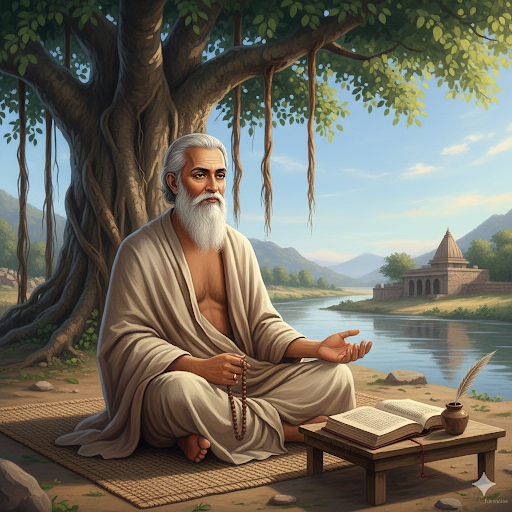
Answer : Preached equality of all human beings, rejecting caste, creed, and religious barriers.
Emphasized devotion (Bhakti) and love for God as the way to attain salvation.
Promoted communal harmony by encouraging respect for all religions and interfaith understanding.
Preached equality of all human beings, rejecting caste, creed, and religious barriers.
Emphasized devotion (Bhakti) and love for God as the way to attain salvation.
Promoted communal harmony by encouraging respect for all religions and interfaith understanding.
Q27. Describe the significance of Harappan seals.
(CBSE 2011)
- Made of steatite; identification in trade.
- Depicted animals, inscriptions → script development.
- Evidence of religion, trade, communication.
Section C – 8 Marks (Q28–30) with Internal Choice
Q28. Critically analyse the strategies adopted by the Mauryan rulers to hold their empire together.
(CBSE 2015)
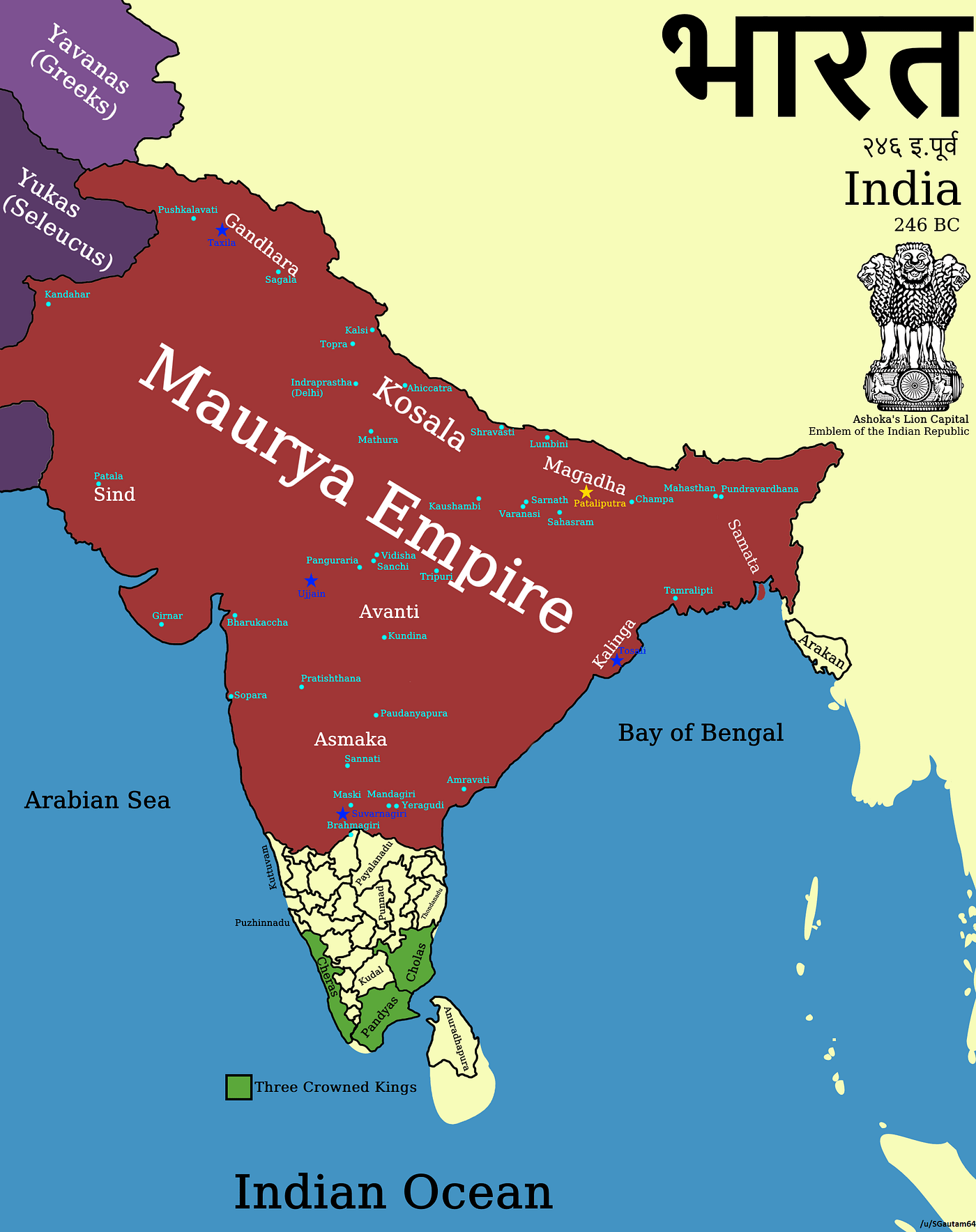
Answer: The Mauryan Empire (c. 321 BCE–185 BCE) was the first major empire to unify most of the subcontinent. Its rulers developed several strategies to maintain control:
- Centralised Administration – The king was supreme authority. Chandragupta Maurya established a strong centralised state guided by Kautilya’s Arthashastra.
- Provincial Government – Empire divided into provinces, governed by princes or officials (Kumaras, Mahamatras). This ensured local administration remained under royal control.
- Efficient Bureaucracy – Officials supervised revenue collection, law, and order. Arthashastra describes spies and informers who kept check on officials.
- Taxation System – Peasants paid one-sixth of produce as tax. This steady revenue funded army and administration.
- Military Organisation – A standing army with infantry, cavalry, elephants, and chariots maintained law and defended frontiers. Megasthenes mentions committees for army management.
- Trade & Infrastructure – Roads, irrigation works, and trade centres linked regions. Standard weights and measures promoted uniformity.
- Ashoka’s Dhamma Policy – After Kalinga war, Ashoka promoted tolerance, non-violence, and welfare measures through rock edicts. This reduced social conflict and strengthened loyalty.
- Integration of Diverse Regions – Through diplomacy, matrimonial alliances, and moral authority, Mauryan rulers kept far-flung areas united.
Conclusion:
Thus, the Mauryas combined military strength, administrative efficiency, economic control, and moral policies to hold together a vast and diverse empire. However, after Ashoka’s death, weak successors and decentralisation led to decline.
OR
Examine the contributions of Ashoka in the expansion and consolidation of the Mauryan Empire.
(CBSE 2012)
Answer: 1. Expansion before the Kalinga War:
Ashoka (reigned c. 273–232 BCE), the third Mauryan emperor, initially followed an aggressive policy of expansion. Under him, the Mauryan Empire reached its greatest territorial extent — from Afghanistan in the northwest to modern-day Tamil Nadu in the south and from Bengal in the east to Gujarat in the west. The conquest of Kalinga (c. 261 BCE) was his last major military campaign.
2. The Kalinga War and Its Impact:
The Kalinga War resulted in massive bloodshed and suffering. According to his Rock Edict XIII, over one lakh people were killed and many more deported. Deeply moved, Ashoka renounced violence and adopted the policy of Dhamma Vijaya (conquest through righteousness), marking a transformation from militarism to moral governance.
3. Adoption and Spread of Buddhism:
Ashoka embraced Buddhism under the guidance of monk Upagupta. He supported Buddhist Sanghas and built stupas, viharas, and monasteries across India and Sri Lanka. His efforts transformed Buddhism from a regional sect into a pan-Asian religion, strengthening cultural unity within the empire.
4. Dhamma Policy – Moral and Ethical Governance:
Ashoka’s Dhamma emphasized truth, non-violence, tolerance, respect for elders, and compassion towards all living beings. His Rock and Pillar Edicts (written in Prakrit, Greek, and Aramaic) served as moral guidelines for citizens, promoting harmony across castes and creeds.
5. Administrative Reforms and Welfare Measures:
He appointed Dhamma Mahamatras to spread Dhamma and oversee the welfare of the people. Hospitals for humans and animals were established, roads and rest houses were constructed, and shade trees and wells were provided along highways—demonstrating a welfare-oriented state.
6. Religious Tolerance and Social Harmony:
Ashoka encouraged respect for all religions. In Rock Edict XII, he urged people not to praise their own sect excessively or criticize others. This fostered religious tolerance and unity among diverse social groups.
7. Diplomatic Missions and Cultural Exchange:
Ashoka sent emissaries such as his son Mahendra and daughter Sanghamitra to Sri Lanka, and others to Syria, Egypt, and Greece. These missions strengthened India’s cultural and diplomatic relations with the outside world.
8. Legacy and Consolidation of Empire:
Ashoka’s reign marked the zenith of Mauryan administration—centralized, efficient, and humane. His moral governance and Buddhist policies created internal stability, administrative unity, and cultural integration that consolidated the Mauryan Empire even after his death.
Q29. Discuss the main teachings of the Buddha. How far were they relevant to his time?
(CBSE 2017)
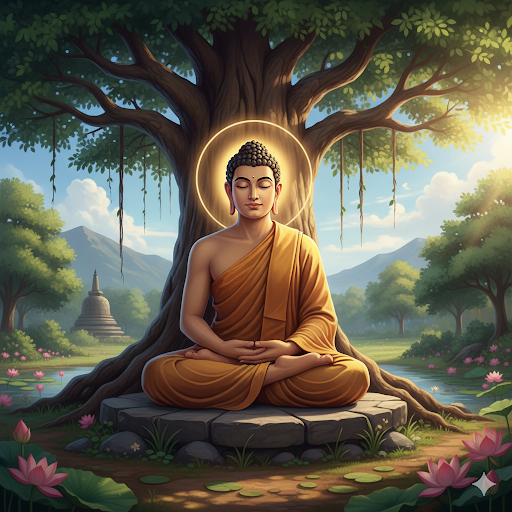
Answer: Introduction:
Gautama Buddha (c. 563–483 BCE), the founder of Buddhism, was born at Lumbini (modern Nepal) in the Sakya clan. He attained enlightenment at Bodh Gaya and preached his teachings to guide people toward peace and liberation (Nirvana). His teachings were rational, ethical, and deeply relevant to the social and religious conditions of his time.
Main Teachings of the Buddha:
1. The Four Noble Truths (Chatur Arya Satya):
Buddha’s core philosophy revolved around four truths:
(i) Life is full of suffering (Dukkha).
(ii) Desire (Trishna) is the cause of suffering.
(iii) Ending desire can end suffering (Nirodha).
(iv) The way to end desire is by following the Eightfold Path (Ashtangika Marg).
2. The Eightfold Path (Ashtangika Marg):
This was the practical guide to attain Nirvana. It included —
Right View, Right Thought, Right Speech, Right Action, Right Livelihood, Right Effort, Right Mindfulness, and Right Concentration.
It aimed to develop moral conduct, mental discipline, and wisdom.
3. The Middle Path (Madhyam Marg):
Buddha rejected both extreme luxury and severe austerity. He advocated a balanced life between indulgence and self-denial — a path of moderation suitable for all.
4. Doctrine of Karma and Rebirth:
Buddha taught that actions (karma) determine one’s future births. Good deeds lead to happiness and bad deeds to suffering. Liberation (Nirvana) comes through ethical living and wisdom, not by rituals or sacrifices.
5. Rejection of Rituals and Caste System:
Buddha opposed the Vedic ritualism, animal sacrifices, and rigid caste hierarchy. He emphasized equality, compassion, and moral purity over birth or social status.
6. Emphasis on Ahimsa and Compassion:
Non-violence (Ahimsa), kindness, and respect for all living beings formed the essence of his ethical code. He believed in universal brotherhood and peace.
7. Belief in Self-Effort:
Buddha taught that salvation depends on one’s own actions — “Appo Deepo Bhava” (Be your own light). He denied the role of priests as intermediaries between man and God.
Relevance in His Time:
8. Reaction Against Brahmanism:
During Buddha’s time, society suffered from ritual excesses, caste discrimination, and inequality. His simple and rational philosophy appealed to common people and offered an alternative spiritual path.
9. Social and Ethical Reform:
His teachings promoted social harmony, moral conduct, and compassion, contributing to the rise of a more humane and ethical society.
10. Spread of Universal Values:
By rejecting caste barriers and emphasizing equality and tolerance, Buddha’s message united people of diverse backgrounds and provided the moral foundation for new communities and kingdoms.
Conclusion:
Buddha’s teachings were revolutionary and humanistic, offering both spiritual salvation and social reform. Their relevance extended beyond his era — influencing Indian thought, Ashokan policies, and global ethics. His message of compassion, moderation, and peace continues to inspire humanity even today.
OR
Describe the central teachings of Jainism.
(CBSE 2013)
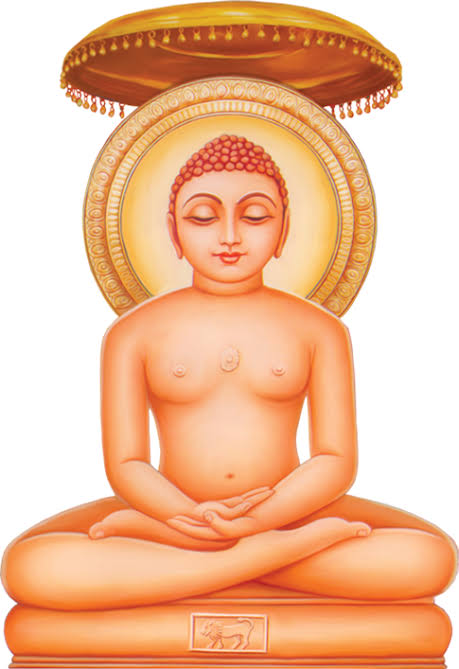
Answer:1. Introduction:
Jainism, one of the oldest religions of India, was founded by Rishabhadeva and developed further by Mahavira (6th century BCE), the 24th Tirthankara. Jainism emphasized a moral, disciplined, and non-violent way of life. Its teachings focus on liberation (moksha) through self-control and purification of the soul.
Central Teachings of Jainism:
2. The Three Jewels (Triratnas):
The path to liberation is based on three guiding principles —
(i) Right Faith (Samyak Darshana): Belief in the true nature of reality and teachings of the Tirthankaras.
(ii) Right Knowledge (Samyak Jnana): Correct understanding of the universe and soul.
(iii) Right Conduct (Samyak Charitra): Ethical and disciplined living.
Together, these lead to the purification of the soul and ultimately to moksha.
(3) Anekantavada (Theory of Multiplicity of Truths):
Jainism teaches that truth and reality are complex and can be seen from multiple viewpoints.
No single person can know the whole truth; therefore, tolerance and open-mindedness are essential virtues.
(4) Five Great Vows (Panch Mahavratas):
These vows guide ethical conduct, especially for monks and nuns:
(i) Ahimsa – Non-violence The most fundamental principle of Jainism. It means complete non-injury to all living beings — not only in action but also in thought and word.
Jains avoid harming even the smallest life forms. This principle shaped their vegetarianism and compassion for all creatures.
(ii) Satya – Truthfulness
(iii) Asteya – Non-stealing
(iv) Brahmacharya – Celibacy or chastity
(v) Aparigraha (Non-possession):
It means detachment from material and worldly possessions. Excessive attachment leads to greed, anger, and sorrow.
Jains advocate a simple life free from desire to reduce karmic bondage.
These vows help purify the soul and minimize accumulation of karma.
(5) Doctrine of Karma and Rebirth:
Jainism believes that every action (good or bad) leaves a karmic imprint on the soul.
Liberation (moksha) can only be achieved when all karmic particles are removed through right conduct, meditation, and penance.
(6) Asceticism and Self-discipline:
Renunciation, fasting, meditation, and control over desires are seen as means to attain spiritual freedom.
Monks and nuns practice strict austerities to destroy accumulated karma.
(7) Equality and Moral Conduct:
Jainism rejects the caste system and ritual sacrifices. It emphasizes equality of all beings, moral purity, and spiritual effort rather than birth or rituals.
(8) Conclusion:
Jainism teaches a life of peace, compassion, and restraint. By following Triratnas and Panch Mahavratas, one can purify the soul and achieve moksha.
Its principles of Ahimsa, Aparigraha, and Anekantavada remain timeless and relevant for maintaining harmony and ethical living even today.
Q30. Analyse the architectural and cultural contributions of Vijayanagara rulers.(CBSE 2016)
Answer:
The Vijayanagara Empire (c. 1336–1646 CE) in South India, founded by Harihara I and Bukka Raya I, reached its peak under Krishnadeva Raya. The rulers were great patrons of art, architecture, literature, and religion, contributing significantly to South Indian culture.
1. Temple Architecture:
Vijayanagara rulers built massive and ornate temples, blending Dravidian style with local innovations.
- Virupaksha Temple at Hampi, a major religious center, showcases tall gopurams (gateway towers), pillared halls, and intricate sculptures.
- Temples had large courtyards, mandapas (pillared halls), and elaborate carvings depicting deities, myths, and royal patrons.
2. Royal and Civic Architecture:
The rulers constructed palaces, forts, and public buildings.
- The Lotus Mahal in Hampi reflects Indo-Islamic influence with arches, domes, and balconies.
- Elephant stables, aqueducts, and step wells demonstrate advanced engineering for water management and civic utility.
- Fortifications like the Hampi fort complex illustrate military architecture combined with aesthetics.
3. Sculpture and Carving:
Vijayanagara artisans produced highly detailed stone sculptures.
- Pillars, doorways, and temple walls feature scenes from Ramayana, Mahabharata, and local legends.
- The musical pillars in Vitthala Temple showcase the combination of art and acoustics, where pillars produce musical notes when struck.
4. Patronage of Literature:
Vijayanagara kings supported Kannada, Telugu, Sanskrit, and Tamil literature.
- Krishnadeva Raya himself composed Amuktamalyada in Telugu.
- Royal academies promoted poetry, drama, and philosophical works, fostering a vibrant literary culture.
5. Promotion of Religion and Rituals:
Rulers supported Hindu religious institutions, built monasteries, and maintained temples.
- Festivals, devotional music, and dance forms were encouraged, reinforcing socio-cultural cohesion.
6. Urban Planning and Infrastructure:
Vijayanagara cities were well-planned with markets, granaries, temples, and royal complexes.
- Roads, bridges, and water channels reflected sophisticated urban management.
- Marketplaces and trade centers indicate flourishing commercial activity alongside culture.
7. Integration of Cultures:
The empire absorbed local, Dravidian, and Islamic architectural elements, creating a unique hybrid style.
- Indo-Islamic arches in palaces and secular buildings coexist with traditional Dravidian temples, showing tolerance and adaptation.
8. Legacy:
The architectural and cultural contributions of Vijayanagara rulers left a lasting impact on South Indian art, temple architecture, literature, and urban culture. The ruins of Hampi are now a UNESCO World Heritage Site, reflecting the empire’s grandeur and creativity.
OR
Exqplain the significance of Amuktamalyada as a source of Vijayanagara history.
(CBSE 2018)
Answer: Amuktamalyada is a Telugu epic composed by Krishnadeva Raya, the greatest ruler of the Vijayanagara Empire (r. 1509–1529 CE). Though primarily a literary and devotional work, it provides valuable historical insights into the political, cultural, religious, and social life of the empire.
Significance of Amuktamalyada as a historical source:
- Insight into the Ruler:
The epic reflects the personality, values, and vision of Krishnadeva Raya, highlighting his devotion, wisdom, and concern for the welfare of his subjects. Historians use it to understand the ruler’s ideals and leadership style. - Religious and Devotional Practices:
It extensively describes Vaishnavism, temple rituals, festivals, and devotional traditions. These accounts reveal the religious priorities and spiritual life of Vijayanagara society. - Cultural Patronage:
The poem showcases the king’s support for arts and literature, demonstrating the cultural vibrancy of the Vijayanagara court. It provides evidence of music, dance, poetry, and architectural appreciation prevalent in the empire. - Courtly Life and Administration:
Though literary, the text gives indirect insights into court organization, administration, and royal ceremonies. It reflects the role of the king in maintaining social order and upholding ethical governance. - Literary Contributions:
Amuktamalyada itself is a masterpiece of Telugu literature, illustrating the linguistic and literary sophistication encouraged by Vijayanagara rulers. It shows how literature was a medium for political and cultural expression. - Socio-Political Context:
The epic includes references to social values, morality, and the role of the king, offering indirect evidence of the social structure, norms, and political ideology of the time. - Symbol of Regional Identity:
By composing the work in Telugu, Krishnadeva Raya reinforced regional language and identity, showing how language and literature were integral to cultural and political assertion. - Preservation of Historical Memory:
While not a chronicle, Amuktamalyada preserves memories of temples, festivals, and urban life, providing historians with clues about the material culture and public life of Vijayanagara.
Conclusion:
Amuktamalyada is thus more than a devotional poem; it is a rich historical source. Through its descriptions of religion, culture, administration, and social life, it helps historians reconstruct the grandeur, values, and intellectual vibrancy of the Vijayanagara Empire.
Section D – Source-Based Questions (Q31–33)
Q31. The Oldest System Discovered So Far
Regarding the drains, Mackay writes: “It is certainly the most complete ancient system discovered so far.” Every house was connected to the street drains. The main drains were made of bricks set in mortar and were covered with bricks that could be removed for cleaning. In some places, limestone slabs were used for covering. The house drains first emptied into a cesspool or sump pit where solid matter settled, and the dirty water flowed into the street drains. In very long drains, manholes were built at intervals for cleaning. It is an archaeological wonder that “debris, mainly small piles of sand, are commonly found lying beside the drainage channels, which shows… that after cleaning the drains, the garbage was not always removed.”
Ernest Mackay, Early Indus Civilization, 1948
The drainage systems were not limited to large cities but were also found in many small settlements. For example, in Lothal, where unbaked bricks were used for the construction of houses, the drains were made of baked bricks.
Q(i) What does this passage reveal about Harappan cities?
Answer: The passage reveals that Harappan cities had a well-organized and sophisticated urban system. Every house was connected to drains, showing attention to hygiene, sanitation, and public health. Even small settlements like Lothal had proper drainage, indicating uniform urban development across Harappan civilization.
Q(ii) How does it show town planning?
Answer: The drainage system shows advanced town planning:
Bricks and mortar were used to construct main drains.
House drains emptied into cesspools, which connected to street drains.
Manholes were provided at intervals for cleaning.
Uniformity in drain construction across cities indicates careful planning and civic management.
Q(iii) Why is this considered unique in ancient world history?
Answer: This drainage system is unique because it was highly advanced and systematic, unmatched in other contemporary ancient civilizations. It demonstrates urban sophistication, hygiene consciousness, and civic engineering, making the Harappan cities remarkable for their archaeological and urban planning achievements.
Q32. praise of samudragupta
This is an excerpt from the Prayag Prashasti:
LHe had no rival on earth. Endowed with numerous virtues and auspicious deeds, he has wiped out the fame of other kings with the sole of his foot. He is a divine being, the cause of prosperity for the good and destruction for the evil. He is unknowable. His tender heart can only be controlled through devotion and humility. He is filled with compassion. He is the giver of thousands of cows. His mind has been initiated for the salvation of the poor, the destitute, and the suffering. He is the embodiment of divine generosity for humanity. Among the gods, he is equal to Kubera (god of wealth), Varuna (god of the ocean), Indra (god of rain), and/or Yama (god of death).
Q(i) What does the inscription reveal about Samudragupta’s policies?
Answer: The inscription shows that Samudragupta followed a policy of merit, justice, and protection of his subjects. He rewarded the good, punished the evil, and ensured prosperity for his people. His administration encouraged humility, devotion, and compassion, reflecting a ruler-focused approach for welfare and moral governance.
Q(ii) What does it tell about rulers and conquered kings?
Answer: The inscription indicates that Samudragupta was supreme among kings, with no rival on earth. Conquered kings lost their fame and had to accept his supremacy, but he was also just and compassionate, suggesting he respected defeated rulers and incorporated them into his administration rather than destroying them completely.
Q(iii) Why is this source important for historians?
Answer: This inscription is important because it provides firsthand information about Samudragupta’s reign, policies, and personality. It highlights his military conquests, administrative approach, and ideals of kingship. Historians use it to reconstruct political history, royal ideology, and social values of the Gupta period.
Q33. One God
This composition is attributed to Kabir: O brother, tell me, how can it be
that the world has not one, but two masters?
Who has confused you?
God is called by many names: such as Allah, Ram, Karim, Keshav, Hari, and Hazrat.
The differences are only in the words, which we ourselves invent.
Kabir says that both are in illusion.
None of them can attain Ram.
One kills a goat and the other a cow.
They spend their entire lives in disputes.
Q(i) What message did Kabir spread?
Answer: Kabir spread the message of the unity of God. He emphasized that God is called by many names—Allah, Ram, Hari, Karim—but the essence is the same. People should not fight over religious labels, as differences are created by humans, and true devotion is more important than external divisions.
Q(ii) Why was Kabir opposed to rituals?
Answer: Kabir opposed rituals because they create conflict and superficial religiosity. The source shows that some people kill goats or cows and spend life in disputes, yet they cannot attain God. He believed rituals without understanding and inner devotion are meaningless.
Q(iii) How did his teachings help in social harmony?
Answer: Kabir’s teachings promoted social harmony by encouraging people to look beyond religion, caste, and ritual. By preaching that all humans worship the same God, he fostered equality, reduced communal tensions, and encouraged mutual respect among Hindus and Muslims.
Section E – Map Question (5 marks)
On the outline political map of India:
(a) Two places A and B are marked and hints given. Identify them and write their names.
A: Capital of Mauryan Empire (hint: near modern-day Patna).
B: Important Buddhist site (hint: Stupa located in Madhya Pradesh).
(b) Locate and label the following three places:
Amaravati
Vijayanagara
Lothal
(CBSE 2015, 2017, 2019)
Hints:
- A: Pataliputra → capital of Mauryan Empire
- B: Sanchi → Buddhist Stupa in Madhya Pradesh
